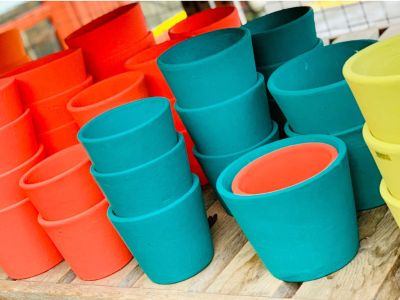Effect of Color on Planters
Planter colors in academic studies have been proven to have a measurable impact on plant growth. The direct impact for container color and plants is on soil temperature. Variations in temperature, in turn, impact how the plant grows. Researchers have found that containers in darker colors, especially black, heat the soil more. For instance, in one study researchers grew bush beans in black, white, and silver containers. Soil temperatures on the sun-facing sides of the containers were highest in the black pots and lowest in the white pots. The plants grown in black containers had significantly lower root mass than those grown in the white. The researchers found that the effect was less pronounced in plants that tolerate heat well. Choosing white or light-colored containers is most important for heat sensitive plants. Another study tested a wider range of colored pots while growing azalea. The researchers found that plants in fiber containers grew the tallest. Those that were grown in white containers grew to the greatest diameter and had the highest dry weight. This indicates a natural fiber container, or a white pot, is a good choice for maximizing plant growth.
Is the Color of Plant Pots Important?
While there are different effects of planter colors, these are most important for nurseries and commercial growers. In a nursery, growers are trying to maximize production for profit, and even small decisions, such as pot color, can make a big difference. As a home gardener, the choice of container color is less important. For maximum growth, choose white or fiber pots. If you prefer terracotta or other colors, your plants will still grow well. The choice of lighter colors is most important for any heat sensitive plants, especially if put outdoors in hot weather or in full sun.
